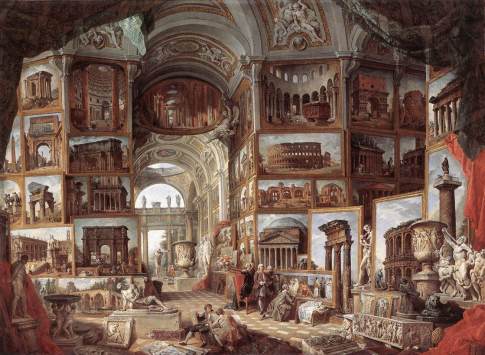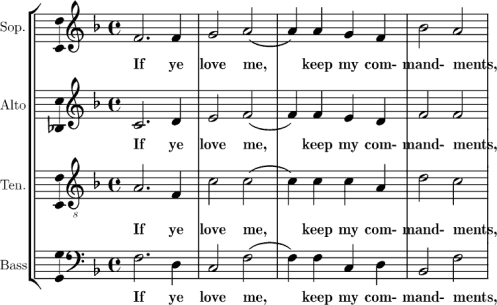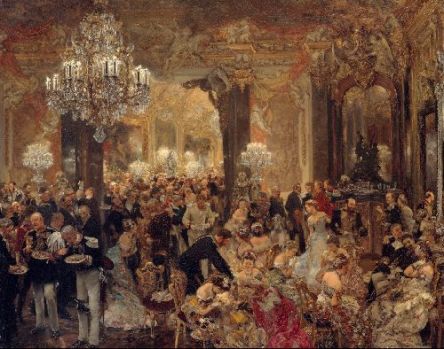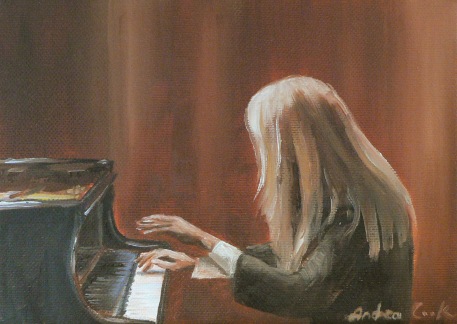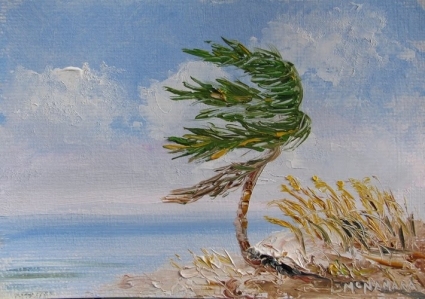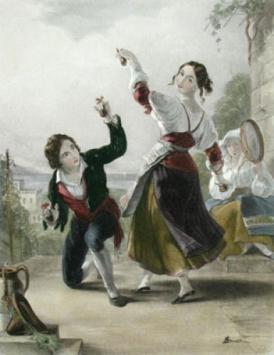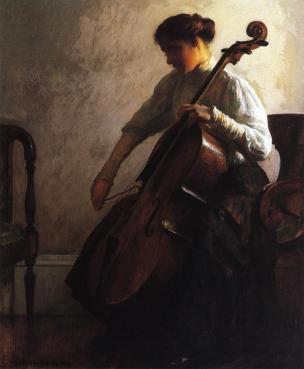[Fr. duolet; Ger. Duole; It. duina; Sp. dosillo]. A group of two notes of equal duration to be played in the time normally taken up by three notes of the same type, e.g., two eighth notes (marked with the figure 2) in the time of three eighth notes in 6/8, 9/8, or 12/8.
Category Archives: Uncategorized
capriccio [It., whim]
[Eng., Fr. caprice]. A humorous, fanciful, or bizarre composition, often characterized by an idiosyncratic departure from current stylistic norms. Throughout its history the capriccio has been closely allied with pieces called *fantasia, but more extreme in contrasts and more daring in deviating from conventions of harmony and counterpoint.
homorhythmic
Characterized by the same or very similar rhythm in all parts making up a musical texture, as in a simple hymn or chorale setting. Texture of this type is also described with the terms of chordal style, familiar style, note-against-note style, isometric, and homophonic [see homophony].
double leading tone
In a *cadence (especially in music of the 14th and 15th centuries), two leading tones, one of which rises by half step to the primary cadential pitch, the other rising by half step to the fourth below or its equivalent in another octave.
stravaganza [It.]
etude
[Fr. étude, study; Ger. Etüde, Studie; It. studio; Sp. estudio]. A composition designed to improve the technique of an instrumental performer by isolating specific difficulties and concentrating his or her efforts on their mastery. A single etude usually focuses on one technical problem; etudes are usually published in groups more or less systematically covering a range of such problems in a range of keys. In present-day usage, the etude falls between the exercise, a short formula not worked out as a formal composition, and the concert etude, which can stand as a self-sufficient piece of music.
Chopin’s Etude in C-sharp minor, Op. 25 No. 7: https://www.youtube.com/watch?v=ZBsfd6sGuLc
sussurando [It.]
largo [It., broad, large]
(1) Very slow; according to some 18th-century theorists, the slowest of the principal divisions of *tempo, though then and later it was often placed between adagio and andante. (2) A movement whose tempo is largo. The piece popularly known as Handel’s “Largo” and played in a variety of arrangements is the aria “Ombra mai fù” (Shade never was) from *Serse, which, however, is actually marked larghetto.
tarantella [It.]
A folk dance of southern Italy that takes its name from the town of Taranto (not, as if often said, from the tarantula or from a dance to cure its bite). It is in a rapid, accelerating 6/8 with shifts between major and minor. The tarantella was taken up by various composers of the 19th century (Chopin, Liszt, Heller, Weber), often as a piece with continuous eight notes (or eight-note triplets in simple meters) and of some technical difficulty.
intonation
(1) The degree to which pitch is accurately produced in performance, especially among the players in an ensemble. (2) A system of tuning, such as *just intonation. (3) The first pitches of a *psalm tone or other form of plainchant, which have the function of establishing the correct pitch for what is to follow and are thus often sung by soloists in preparation for the entrance of the choir.

